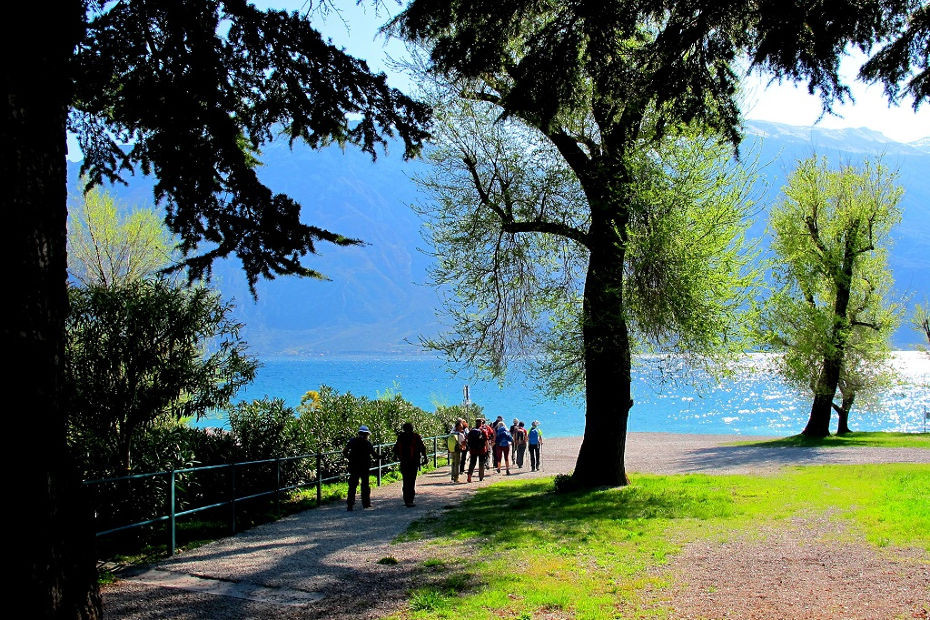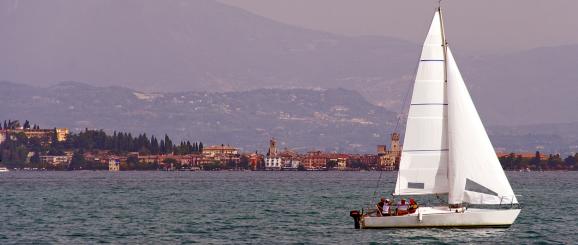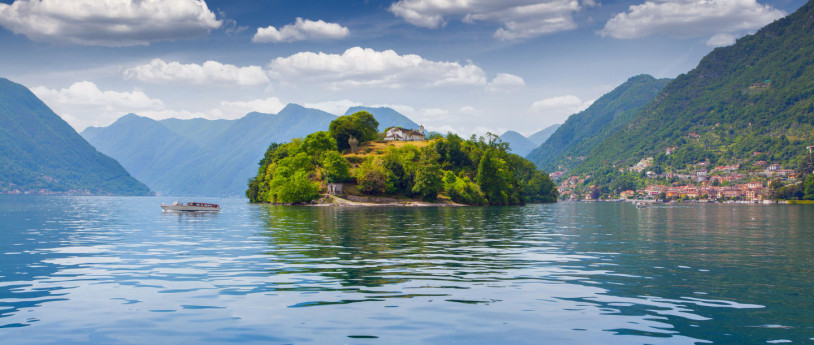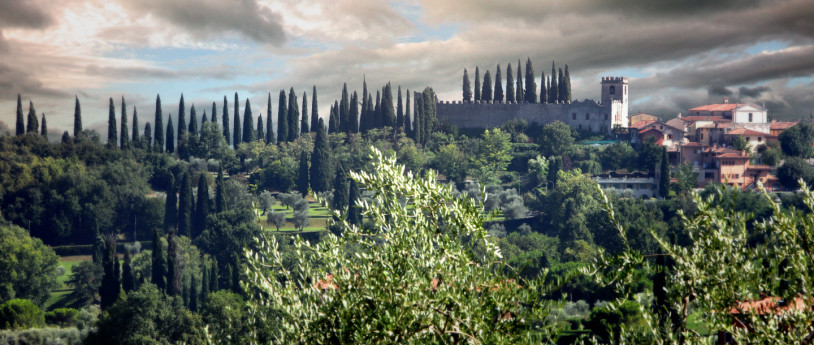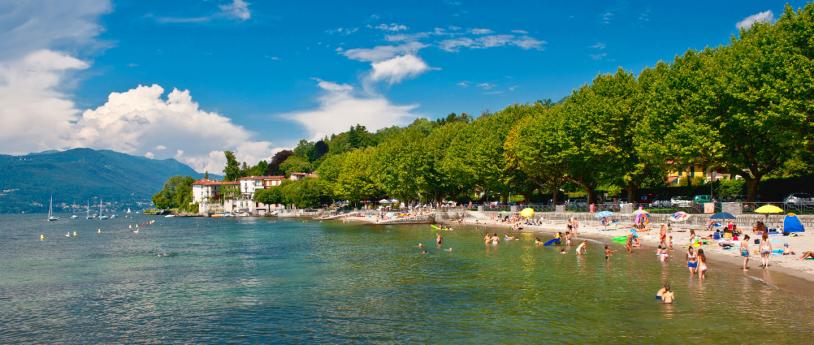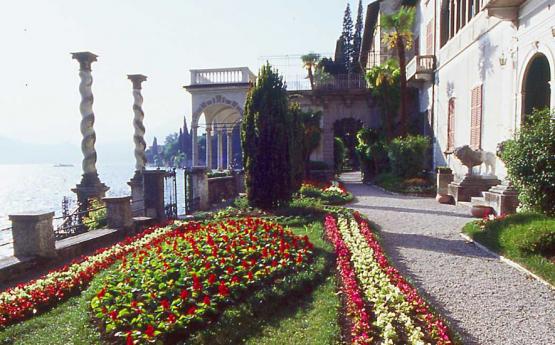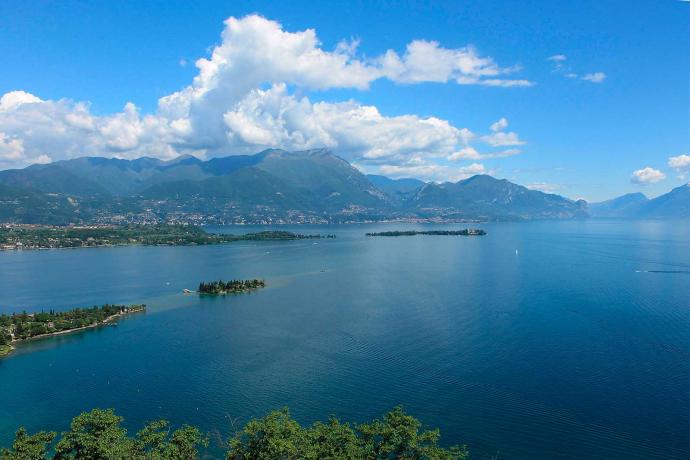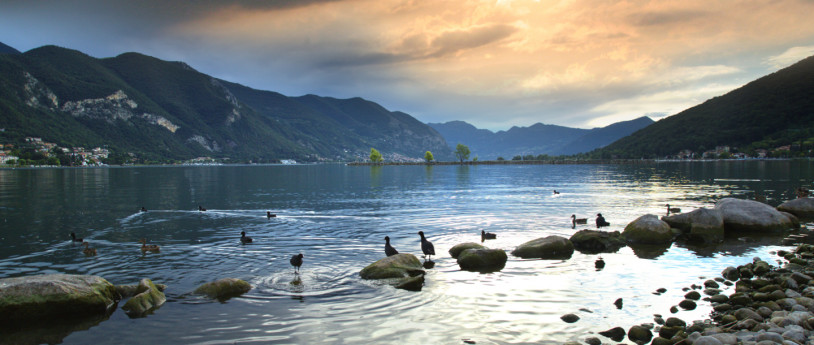- Lakes
- Villages
Discover Alto Garda bresciano
Towns perched on cliffs over the water, with dizzy views. And roads dug out of the rock, as harsh as…
“An inland branch” of the Mediterranean sea for many centuries, the upper Garda lake or “Alto Garda” is the northernmost part of a large citrus-producing area.
Lemons are found anywhere. Terraced crops and facilities protecting the plants during winter were first introduced in the Thirteenth century and impressed Goethe during his Italian Journey at the end of the Eighteenth century. Scattered in the territory around the municipalities of Limone, Gargnano and Maderno, these old lemon crops, or what is left today of the old facilities, pay witness to a long history of work, skilfulness and impressive results, visually illustrated in the Ecomuseo della limonaia Pra dela Fam (an ecological museum in the port of Tignale).
The large greenhouse on the lake shore is of great architectural and landscape interest, with the opportunity to taste local lemon-based products (including lemons pickled in salt and flavoured with pepper or chilli pepper). In Limone, a special lemon crop called Limonaia del Castèl, situated under the rocks of Mount Sughera, is also worth a visit, with its profusion of walls and pillars all around and its old growing methods.
Lemons and more
Gabriele D'Annunzio, Italian writer and poet, had the merit of making the Limone del Garda village accessible by road. Until 1931, it could only be reached on foot or by boat.
He advocated the completion of construction works of the Gardesana Occidentale road, which today runs along the Lombard shore of the upper lake.
This village, a favourite among German tourists, retains its old houses around a small port, which evokes an ancient period, when the village was nothing but an area for fisherman. Walking through its narrow alleys you will come across the San Pietro’s church, a patron saint of the place since the Ninth century. Roofs are covered by flat Roman tiles and traces of old frescos can be found under the small portico. The bell tower was partially torn down during World War I to remove a strategic target for an Austrian cannon placed in the nearby Crocette. Limone is also the birthplace of a saint,
San Daniele Comboni, whose house can still be visited to get an insight of the work of missionaries, of both genders, of the San Daniele Order all over the world.
Strong emotions
Tremosine overlooks the lake from above on an extensive plateau and resembles more an alpine village than a lake town, with its grazing land and typical mountain activities. Vegetation, however, is typically Mediterranean. A trip to Tremosine, among the most picturesque Italian municipalities, is a totally emotional experience. It only suffices to run along the Strada della Forra, a panoramic road that Winston Churchill defined the ‘Eighth World Wonder’…
The road climbs amidst mountains by exploiting a natural cleavage excavated by the Brasa torrent. Walking or driving through it after sunset is particularly inspiring, better if you do it on a motorbike. The Terrazza del Brivido is not to be missed, i.e. a panoramic terrace suspended at a height of 350 m over the lake surface, for a breathtaking 360° experience, including a view on the Strada della Forra road. The terrace can be freely accessed from the Paradiso Hotel.
Green spaces and silence
A site of Community interest for the EU, Valvestino is a paradise for nature lovers. This charming, wild mountain area is a border and transition land, which has been inhabited since prehistory and also crossed by the ancient Romans. During World War I, it was under Austrian rule.
If you walk through a trail leading from Magasa to Mounts Tombea and Caplone, you will meet old military depots excavated in the rock, trenches and masonry outposts, or settlements built on the ground. The barns with thatched roofs of Cima Rest and Denai are also worth visiting. These are the only remains, in the Alpine chain, to bear witness to an old culture and have now been refurbished into comfortable accommodation facilities.
immagine di copertina: www.livelagodigarda.it

